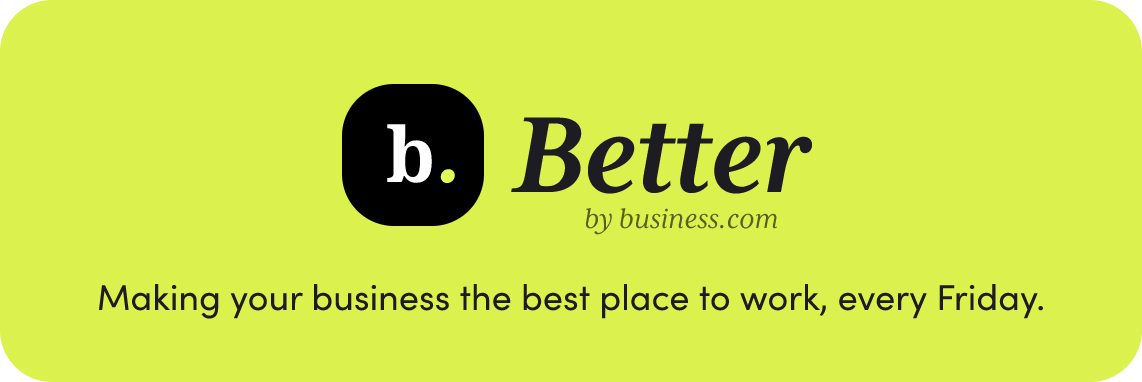New dads are leaving money on the changing table. Compared to 93% of eligible women who take maternity leave, only 62% of men take paternity leave.
It may be due to stigma or workaholism, but relinquishing leave comes at a cost that fathers may not realize: Children feel a closer bond with dads who took at least two weeks of leave when they were newborns, researchers found. (Also, marriages are 25% less likely to end in divorce if a new dad takes paternity leave, possibly because it signals a commitment to family.)
Paid leave is good for babies, good for parents, and here’s why it’s good for business.
|
Reference checks: Why they’re still worth your time
Evidence: The best resources for making informed decisions
Comic: When you can’t help but ghost coworkers
|
|
|
Why Reference Checks Are Still Worth Your Time (if Done Correctly)
|
Are letters of recommendation no longer recommended? In a LinkedIn poll of over 1,500 hiring managers last year, half admitted that reference checks are “pointless” and another quarter responded they are “conducted only for compliance.”
Nevertheless, 96% of hiring teams perform background screenings, according to the National Association of Professional Background Screeners. As unpopular as reference checks might be, they aren’t going away. So, how can you ensure they’re worthwhile?
To cut through the noise, b. spoke to Lisa Alvarado, marketing director at Kelly Services, one of America’s largest HR consulting firms.
“There’s no replacement for that manager-to-manager connection,” Alvarado says. “That connection allows us to understand an applicant’s impact — by either generating revenue, saving costs, working independently, or being a positive team member.”
While automated services can verify that a candidate was employed during the time frame they claim, solely relying on them won’t provide important context. Instead, Alvarado suggests asking for three to four references; you’ll likely hear back from at least two without long wait times. (Applicants with responsive references are the most likely to secure a job offer.)
“These are often difficult decisions, especially when you receive several qualified candidates,” Alvarado says. “Having multiple references can help put you at ease and give you the confidence to make the right decision.”
Keep your questions specific to the role you’re hiring for, Alvarado says. Identify the most relevant hard and soft skills, and remain mindful of the reference’s time. (Too many questions could dissuade them from answering thoroughly.) Performance inquiries such as the following have their place:
- “How successful were your candidates in completing their tasks and meeting deadlines?”
- “What kind of impact did this individual have on your company?”
- “In what ways did they help generate revenue or cut costs?”
Reference checks might feel like a chore, but they remain a vital part of the hiring process — and remember, they’re only as effective as the questions you ask.
|
|
|
Document management made easier than ever
|
Businesses generate a lot of documents, all of which need to be organized, accessible and secure. Whether you’re generating proposals and invoices, archiving important legal documents, or developing your standard operating procedures, the right people need access quickly and easily to keep your business moving.
That’s where Adobe Acrobat comes in, helping small businesses create, edit, share, scan, and sign digital documents with a few clicks. Move quickly and keep every stakeholder in the loop, from team members and partners to customers; Adobe Acrobat gives you the agility to do just that.
See firsthand why businesses trust Adobe with billions of important documents each year by test driving Adobe Acrobat Pro for free.
|
|
|
Evidence-Based Practice: Better for Decision-Making Than Gut-Based
|
Dr. Ben Baran is an associate professor at Cleveland State University and co-founder of Elevating What Works.
What would you do if your doctor replaced your knee without any diagnosis? My guess is that you’d be suing for malpractice.
Yet trying solutions without proper diagnosis is common in management. Team morale seems down, so executives schedule a company picnic. People are treating each other badly, so managers have them go through training. But is there any evidence that those solutions will help?
One key to better diagnosis in management is evidence-based practice. You can learn more here, but you can also get started by considering the following four sources:
- Professional expertise: Consult with people who have relevant experience and insight that can help guide your thinking. Consider talking with trusted peers, mentors, and other advisors.
- Stakeholders’ concerns: Think about the people who might be affected by your decision, either directly or indirectly. Talk with them to learn their perspectives, and then think through how those perspectives might influence your potential options.
- Scientific research: Many areas of management — from employee behavior to logistics to strategy — have a useful body of knowledge built upon decades of research. Carefully evaluate the types of articles or books that you read; those that cite rigorous research are likely more informative than those that tell a story about how one person achieved success.
- Organizational data: These could be various key performance indicators, personnel metrics, or other numbers that give you a sense of what’s going well and what’s not. Encourage your people and teams to help you by providing meaningful data, and invest in analytical skills for your team members.
You don’t actually have to use all four sources of evidence every single time you make a decision. But instead of relying on gut feelings, each source can help increase your probability of diagnosing management challenges and guiding potential solutions.
|
|
|
On Feb. 23 in Business History:
|
- 1850: Swiss businessman Cesar Ritz, who founded the Ritz Hotel, was born.
- 1896: The first Tootsie Roll chocolates were hand-wrapped and released. They sold for a penny each. Today, 64 million Tootsie Rolls are manufactured daily.
- 1947: The International Organization for Standardization (ISO) began operating. It ensures that products and services are safe and reliable from country to country.
- 1965: Michael Dell, founder of Dell Inc., was born. His company employs over 150,000 people and earns around $100 billion annually. Dude, you’re getting a birthday!
|
|
|
Written by Lauren Vino, Elizabeth Barton, and Ali Saleh. Comic by John McNamee.
|
|
|
|



.png)

.png)
.png)

.png)
_1.jpg)